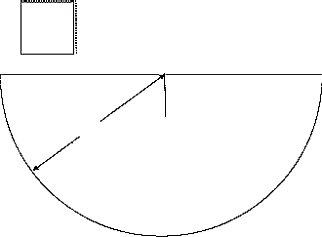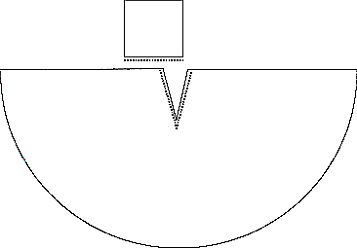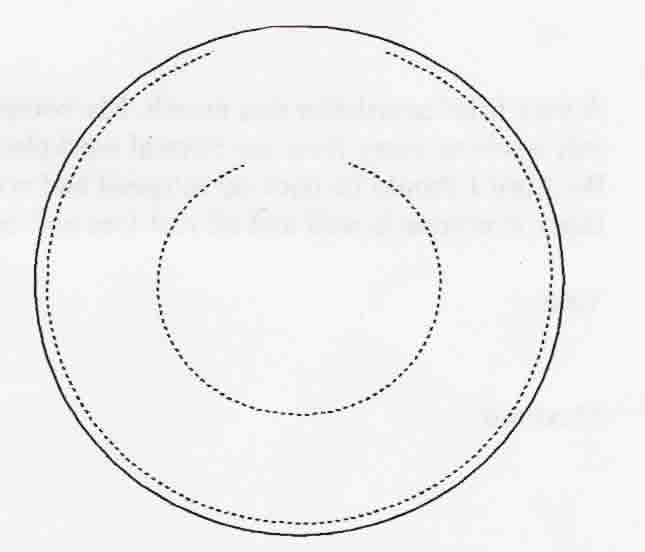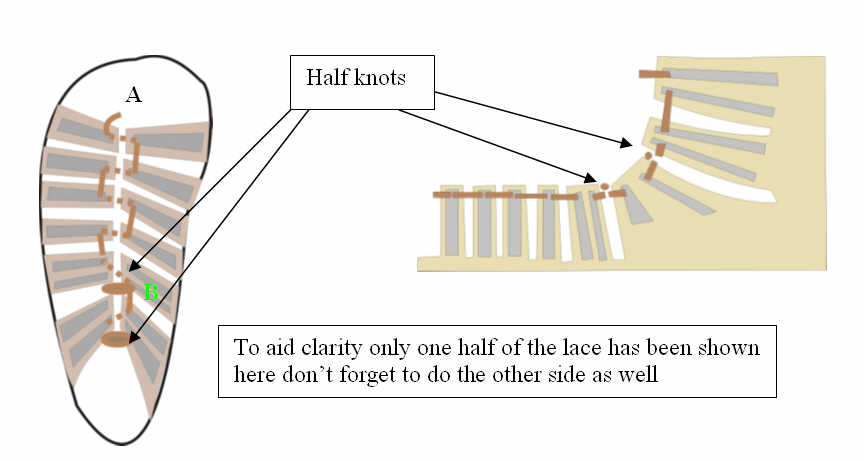|
Soft kit |
 Maximio (Peter Noons) |
|
The Paenula needs some manufacturing
to take place but again is not too difficult. It is a large semi
circle which then has a square hood stitched onto it. Then you need to cut a slit 20 cm long in from
the centre of the long straight edge. Stitch one of the loose
edges of the hood to each side of this slit. NB the two edges
you have already sewn together of the hood should form the back
and the top so make sure that the back is at the point of the
V in the slit (see diagram). You can then either fasten the cloak at the
throat with a large brooch or attach it together with three toggles
which would have fastened across your chest. These can be carved
from wood (not too hard especially if you were a boy scout), or
made from horn which can be bought from trader's fares. |
 |
 |
|
 |
A variation on this form of cloak was the circular
pattern whereby you would need to make two semi circular lengths
which would be stitched together about 120 cm along one of the straight
edges. The hood is made as above and then attached with the rear
seam beginning where the two halves of the cloak have been joined.
Fastening is as for the semi circular cloak above. This will create
a large but very warm cloak, perfect for very cold weather. |
| Use pigs fat or camping waterproofing to weather proof the cape. | |
|
Method 1 : Bracchai. The auxilia wear the brachai. The easiest method is to find a pair of jeans and trace around them for the pattern. Leave enough material above the waist to fold over for a leather thong to pass through. Brachai can be fairly loose fitting but try to avoid them being too baggy. Brachai may extend all the way to the ankles.
|
|
|
Rather than use the black balaclava look that proved so popular recently this offers a more stable (less slipping on the head) and more authentic appearance. To make it you will need some cloth (a metre square
should be fine - colour is irrelevant though avoid using your old
Teletubbies pyjamas as upturned helmets may be on show to the public),
needle and thread, a smallish dining plate, a saucer and no sticky
back plastic. |
 |
|
Stitch the two circles together all around
the edge and then all around the inner circle (see diag.). Leave
a small gap in each line of stitches of about 4cm. Yes I know the Roman's didn't have double sided tape but by using this you can always remove the liner periodically to wash it - not a bad idea unless you want to smell as if you've bathed in pig fat. Adapted from the
Armae web site article
|
|
| Calligae | ||
 |
||
|
Mestrius (Dave Marsden) Contact Details -
Dave
Marsden |

